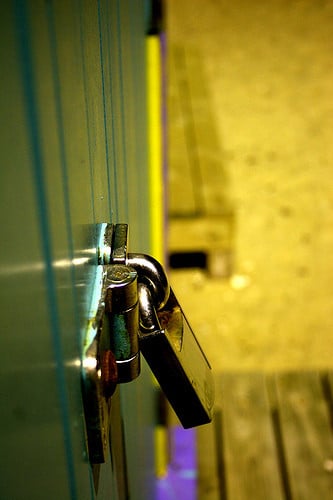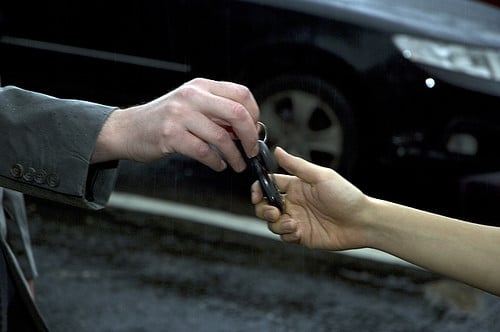 Those of you with travel blogs know that they don’t usually go down, get filled with nasty comments, or have the design fall apart…that is until you’re not in front of it for a day or two. There are some easy ways to maintain and lock up your travel blog when you’re traveling and keep things running smoothly until you return..
Those of you with travel blogs know that they don’t usually go down, get filled with nasty comments, or have the design fall apart…that is until you’re not in front of it for a day or two. There are some easy ways to maintain and lock up your travel blog when you’re traveling and keep things running smoothly until you return..
Depending on how you host your blog, some of these precautions may or may not apply.
Comment Moderation
Unless you already moderate all of your comments, when you can’t be at your travel blog for a few days it’s a good idea not to allow every comment to be posted until you get a chance to approve them. I know that for many this might make you worry about slowing or discouraging conversations but it can save you a headache from filtering out spam, off-topic, and nasty comments when you return.
Change Your Password
Create a long (at least 10 character) randomly generated password for your blog before you leave on your trip. The Gibson Research Corporation has a free random password generator you can use. Write it down and keep it with you so you can log in to your account once you can bum a wi-fi signal.
- I also recommend using the Login Lockdown plugin if you use WordPress. It locks out access to your WordPress blog login for 60 minutes attempts after 3 incorrect attempts. It’s a good deterrent against brute force attacks on your blog password.
Ask A Blog Buddy
 Find someone who you know is online quite a bit to check in to your blog from time to time to see if it’s up and running well. Make sure you really trust the friend or family member and give them the instructions and (newly created random server and blog) passwords to reset things in case your blog decides to hiccup while you’re hiking in the Andes.
Find someone who you know is online quite a bit to check in to your blog from time to time to see if it’s up and running well. Make sure you really trust the friend or family member and give them the instructions and (newly created random server and blog) passwords to reset things in case your blog decides to hiccup while you’re hiking in the Andes.
- It’s a good idea to change your passwords when you return, preferably still using longer, randomly-generated passwords.
Wait To Make Those Design Changes
New plugins, themes, and other design changes should be avoided right before you go. This can be tough because many times right before traveling you have free time to tinker with your blog after preparing some quick things to write when you’re traveling. I’d also recommend carefully editing and rereading the posts you’ve prepared, you don’t want to write about a raping flight attendant instead of a rapping one like I did. (Guess when that happened – when I was traveling and couldn’t fix it right away.)
What Steps Do You Take, Any?
I got the idea to write this post after misreading somewhere else ‘How to Keep Your Bags Safe’ for “blogs safe”. It got me thinking about our little virtual homes that people all over the world can visit while we travel. Bloggers, what precautions or preparations do you make to maintain your travel blog when you know you won’t be right in front of it for a few days, if anything?
[photo by: Looking Glass, US Army Korea – IMCOM]












I hadn’t thought about this but I did have the spammers hit while traveling so I’ll use moderation when I’m away from now on – good tips – thanks
It’s definitely easier to manage when you get back.
Excellent advice. I am going to get the password generator and the Login Lockdown. We use the comment moderation and find that it works well. We have it set up so that you can leave comments freely once you are approved once. That way, your regular readers can have conversations without having to wait for approval.
Thank you again for the suggestion of adding the notify me of follow up comments widget. I love it!
I think that’s the best setup. I haven’t been moderating in general but have been considering it lately.
Great to see subscribe to comments, it’s easier keep up with conversations, especially as your RSS reader grows and grows. Hopefully you’ll see a bump in traffic as well 🙂
I’ve just installed Login Lockdown. Thanks for the suggestion.
I’ve got my comments set up in the same way as Dave and Deb, only new commenters need approval.
Anytime – Login Lockdown is great except for the occasional times I lock myself out 🙂
Great tips. I’ll take a look for Login Lockdown. I know a fellow blogger that was hacked (through a plug-in). Since then, I’ve tried to be more careful.
It’s one of the best security-related plugins for WordPress I’ve come across. Some pretty big blogs have been hacked so it’s good to take precautions.
Another tip: Place an empty index.html file in your WordPress plug-ins directory. If you don’t have one, anyone can look at the directory and plug-ins you have installed, and hack based on that.
Thanks for the advice, I’ll go ahead an do that. I’ve also found this plugin which adds the blank file to the plugins folder and a few other things.
http://wordpress.org/extend/plugins/secure-wordpress/
I haven’t tried it though.
I like these tips. Simple tips that we all somehow forget to practice when we are on the road!
It’s easy to forget locking up our online homes 🙂
Great tips, Anil. Both thru the post and comments.
I do only a few of them but I think I have to get some more. I am also sending link of this post to some of my friends. 🙂
Cheers !
P.S.- Do you do all that is written here?
Yes – except that of the list I don’t really moderate comments. I might if I’m going to be away from the computer for a while but that rarely happens. My laptop is attached to my hip and I try to find wireless everywhere!
Hi Anil,
These are some really great tips. I never thought about using Login Lockdown. Good idea!
Thanks Carrie! Login Lockdown is a nice lightweight plugin that adds a good layer of protection for your blog. You can set it to be as strict as you want too which is nice.
Hey Anil,
Great article as usual!
By the way, I’ve been using password generators for some time since last year June when my email got hacked and I lost many contacts and important emails.
I guess one of the only way to actually keep you site safe from hackers and having a 100% uptime is definitely by changing your passwords once a month? Even when you’re not travelling.
Have a great weekend ahead Anil 🙂
Hi Anastasia,
It’s really impossible to stay 100% safe from someone hacking your site or have your site never go down. I do recommend changing your (randomly-generated) passwords once every 45-90 days and not using the same passwords across all of your accounts.
Hey Anil,
Yeah, my bad. I mean at least 99% safe? 1% for the little possibility of getting hacked unless my blog is a famous or branded blog.
I change them once a month and yes, I’m using 3 passwords for all my accounts. 🙂
Have a great week ahead Anil!
There’s always a chance but good password management is a great way to keep your blog safe! If you’re using random passwords and changing them every 30 days you’re already well ahead of most bloggers (and big companies) out there.
I do comment moderation now after spammers hit my site several times. Great tips once more here, thanks for sharing!
…and still there is so much spam! Moderation has helped me reduce it as well but they are relentless.
Watch out when using Login Lockdown though, it will lock the account quite thoroughly. I wish I could remember the name of the file, but there’s one available that will let you unlock things again by uploading a specific file to your server and running it.
Anyway, it’s also good practice to harden your WordPress installation by doing other things:
– Remove the footprint in the header which tells what version you’re using
– Remove the LiveJournal remote blogging capabilities
– Move your admin login page to something other than /wp-admin/
– Change the database name to something not easily guessable rather than the default… “gRe5n_raBB1t” is a lot harder to guess than “wp_db”!
Great additional tips Jack, I appreciate them. …and you’re right once Lockdown locks you out it can be a bit frustrating to wait for the lockout to end of unlock it using the file you mentioned. The security trade-off I suppose. Also good incentive to remember your password 🙂
Not to swear, but this whole series is fracken excellent! I hadn’t even considered protecting my blog. I’ll be doing password generator and Login Lockdown among other suggestions in the series.
haha, thanks 🙂 Love the word frack – glad it’s made it into our lexicon 🙂